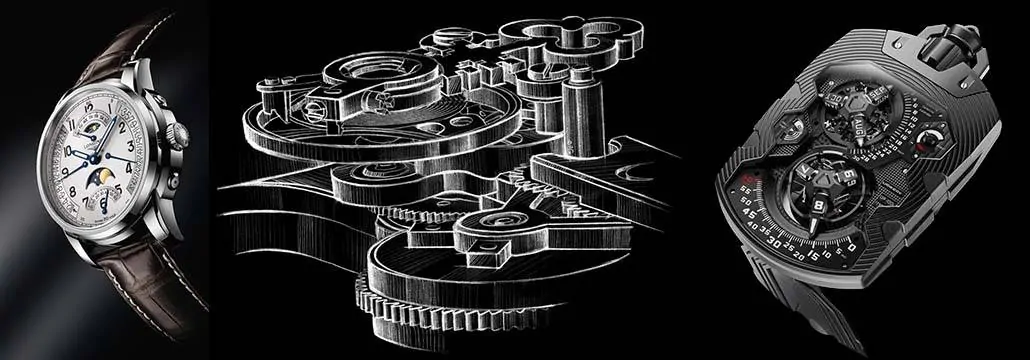You’ve probably heard of wrist watch complications, but do you know what they actually do? Wrist watch complications refer to any additional features or functions on a watch beyond just telling time, and they can range from simple date displays to intricate tourbillons and moon phase indicators. Each complication serves a unique purpose, adding practicality or elegance to the timepiece. In this article, we will delve into the fascinating world of wrist watch complications, exploring their various functions and how they enhance the overall watch-wearing experience. So, whether you’re a watch enthusiast seeking to deepen your knowledge or simply curious about the inner workings of these intricate timepieces, let’s embark on a journey of discovery together!

Chronograph Complications
Definition and History
A chronograph is a popular complication found in wrist watches that adds a stopwatch function to the timepiece. The word “chronograph” is derived from the Greek words “chronos,” meaning time, and “graph,” meaning writing. This complication allows you to not only keep track of the time but also measure elapsed time accurately. The history of the chronograph dates back to the 19th century when watchmakers sought to create a device capable of measuring short durations of time. Today, chronograph complications are a favorite among watch enthusiasts.
Functions
The primary function of a chronograph complication is to measure intervals of time. It enables you to time events, races, or even daily activities with precision. By using the pushers on the side of the watch, you can start, stop, and reset the chronograph hand. The main seconds hand of the watch serves as the chronograph hand, and smaller subdials provide measurements for seconds, minutes, and sometimes hours. This allows for accurate tracking of elapsed time, making chronograph complications ideal for sports and daily timing needs.
Types of Chronograph Complications
There are several types of chronograph complications, each offering unique features. The most common is the standard chronograph, with subdials displaying seconds, minutes, and hours. There are also flyback chronographs, which allow for quick restart of the timing function without having to stop and reset the chronograph hand. Another popular type is the rattrapante, or split-seconds chronograph, which features two chronograph hands that can measure separate events simultaneously. Other variations include column-wheel chronographs, which offer smooth and precise operation, and chronographs with tachymeters or telemeters, enabling speed or distance calculations. With a range of options available, there is a chronograph complication to suit every watch lover’s needs.
Calendar Complications
Definition and History
Calendar complications are a fascinating feature found in wrist watches that display date, day, month, and sometimes even year. These complications are designed to provide convenience and practicality by keeping track of the calendar without requiring manual adjustments. The history of calendar complications can be traced back to the 16th century when watches started incorporating mechanisms to display the date accurately. Today, calendar complications come in various forms, from simple day-date displays to intricate perpetual calendars.
Functions
The main function of a calendar complication is to provide the wearer with information about the current date and day of the week. Depending on the complexity of the calendar complication, it may also indicate the month and even the year. These complications eliminate the need for constant manual adjustment and ensure that your watch always displays the correct date. Calendar complications are particularly useful for individuals who frequently travel or have busy schedules and need to keep track of their appointments and commitments.
Types of Calendar Complications
There are several types of calendar complications, each offering different levels of complexity. The simplest form is the date complication, which displays the day of the month. A day-date complication combines the date and the day of the week. Moving up in complexity, there are annual calendars that can account for the varying lengths of months, except for leap years. Finally, perpetual calendars are the most intricate calendar complications, taking into consideration leap years as well. These complications automatically adjust the date, day, month, and leap year information, making them highly sought after by watch collectors and enthusiasts.

Moon Phase Complications
Definition and History
Moon phase complications are a visually captivating feature found in wrist watches that accurately display the current phase of the moon. This complication adds an element of charm and elegance to timepieces while also providing practical information. The history of moon phase complications can be traced back to the 17th century, when watchmakers began incorporating this feature into their creations. Today, moon phase complications continue to enchant watch enthusiasts, showcasing the relationship between horology and the celestial world.
Functions
The primary function of a moon phase complication is to indicate the current phase of the moon. It adds a touch of artistry to the watch dial, often depicting a small disc or aperture that displays the moon in its different phases. The moon phase complication is based on the lunar calendar, which consists of 29.5 days. Some watches also incorporate additional information, such as the age of the moon or the time of the next full or new moon. Moon phase complications are not only aesthetically pleasing but also have practical applications, particularly for those who engage in outdoor activities or have an affinity for stargazing.
Accuracy and Display
Moon phase complications are designed to accurately portray the progress of the moon’s phases. Most moon phase complications offer a precision of around 99.998%. However, it’s important to note that the mechanical nature of watch movements can result in minor discrepancies over time. To ensure accuracy, some watchmakers incorporate correction pushers that allow for easy adjustment of the moon phase indication. The moon phase is usually displayed on a subdial or aperture, providing a delightful visual representation of the moon’s waxing and waning cycle.
Continue to next page for more…


